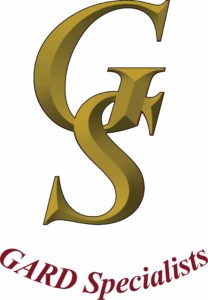Tanker firefighters tell ‘war stories’ in Reno
Jan 14, 2013
The Associated Aerial Firefighters annual meeting began this weekend at the Eldorado in Reno and continues today with discussions on new technology and preparedness in the face of what members are calling a depleted air tanker fleet.
“It something like (a fraternity),” said Walt Darran, association member and retired air tanker pilot. “It includes people from different companies, agencies and even some outside the industry.”
About 100 members make up the Associated Aerial Firefighters with members from around the world, and about half of them are in Reno this week. Reno is the annual destination because of “tradition” and its location as a geographical center for large-scale fires, Darran said.
There are plenty of “war stories,” as Darran said — some hitting close to home for Nevada.
Last summer, a Lockheed P-2V aircraft tanker was unable to lower its landing gear making an approach into the Minden-Tahoe Airport after fighting a fire. No one was injured as the plane made an emergency landing on the runway.
Another P-2V air tanker crashed last summer in Hamblin Valley in western Utah killing two Idaho men who were fighting a fire that originated about 150 miles northeast of Las Vegas. That plane was a Cold War-era P-2V built in 1962.
“We do make mistakes, but we do our best to learn from them and mitigate them,” Jim Barnes, a Grumman S2-T pilot of Sonoma, Calif., said.
Barnes said there was one incident about 10 years ago when he was flying four-engine aircraft from Arizona to North Carolina and had to glide a plane onto a runway after fuel contamination led to failures in each engine.
“We had to drive in with no engine,” he said. “You have to be good with the man upstairs to make it in with something like that…you have one chance to do it right.”
Darran described such stories as “war stories,” which were popular among the pilots at the annual meeting.
But much of the group’s focus remains on making sure the nation is prepared with the necessary air firefighting fleet — and that “war stories” are avoided at all cost.
One of Associated Aerial Firefighters’ biggest concerns is federal response.
“California does it best, but Nevada’s problem is it so often has to rely on the feds,” Barnes said.
The U.S. Forest Service told the Associated Press this summer its fleet had significantly dwindled since 2004 when 33 air tankers were grounded after a string of high-profile crashes, including the Cannon Fire near Walker, Calif. in 2002.
The U.S. Forest Service’s fleet had dwindled to nine contracted air tankers this summer, with Congress discussing an extra four to be contracted.
That was simultaneously happening while fires raged in Northern Nevada along the border with Oregon. One of them, the Holloway Fire, burned more than 400,000 acres as firefighters worked nearly the entire month of August before containment.
The U.S. Forest Service could not be immediately reached for this story.
“It’s just that it’s maddening and frustrating because people worry about wars that may or may not happen, but this is something that happens every summer out here,” Darran said.
The Associated Press contributed to this story.











Speak Your Mind
You must be logged in to post a comment.